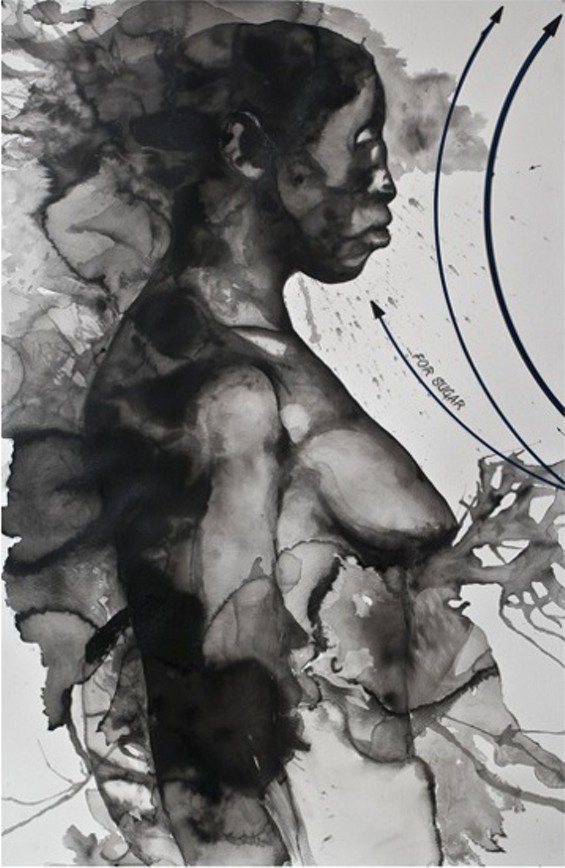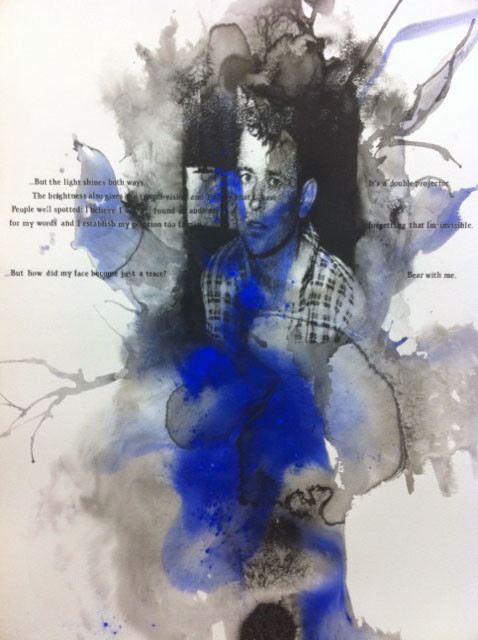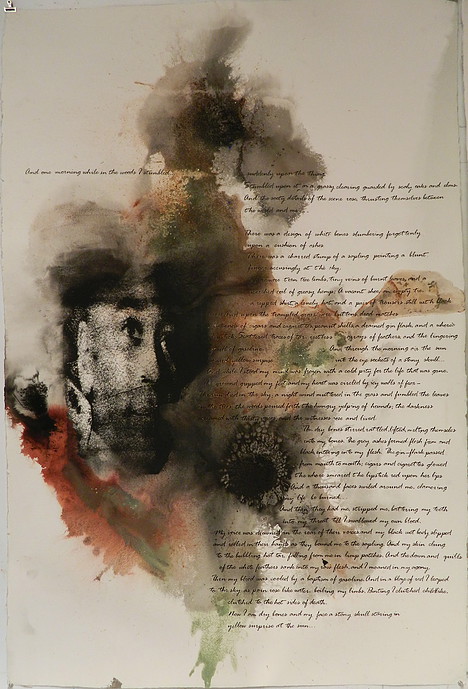
Rodney Ewing is one of the artists presented at the StartUp Art Fair in Los Angeles, January 29 through 31.
Artist Statement 1
While debating demanding topics such as race, religion, or war, it is simple enough to become polarized, and see situations in either black or white, right or wrong. These tactics may satisfy individuals whose position depends on employing policies or implementing strategies that promote specific agendas for a specific constituency. But as an artist, it is more important to create a platform that moves us past alliances, and begins a dialogue that informs, questions, and in some cases even satires our divisive issues. Without this type of introspection, we are in danger of having apathy rule our senses. We can easily succumb to a national mob mentality, and ignore individual accounts and memories. With my work I am creating an intersection where body and place, memory and fact are merged to re-examine human interactions and cultural conditions to create a narrative that requires us to be present and profound. (from website artist)
For Sugar, 2011.
Artist Statement 2
Place has always nursed, nourished and instructed man; he in turn can rule it and ruin it, take it and lose it, suffer if he is exiled from it. And after living on it, he goes to it, in his grave. Place is as close to our living lives as the earth we pick up and rub between our fingers–Eudora Welty
The definition of place and time as used by historians removes it from our living lives. Confined to areas that have been battled over, conquered, parceled, and removed in the name of exploration, religion, and fortune; Place has been altered into exotic geographical points inhabited by mythical tribes called “them” and “those”; and time is used to commemorate the achievements of the victors. The result of these assignments has produced a narrative that does not clearly document the intimate accounts of our experiences. We are flesh and bone and deserve to be represented completely.
Days and Occasions, 2015.
My work focuses on my need to intersect the sections of our being that have become disparate, such as body and space, memory and integrity to examine social, political, and cultural conditions. I approach each of these by creating pieces that go beyond documenting the event as cold fact and include the emotional aspects (from website Vorres Gallery)
Artist Statement: Fact & Fiction
Invisible Ray.
The stories we learn about individuals–whether they be historical or taken from recent headlines–can be incomplete narratives. We learn facts and statistics, or sensationalized intimate details that are used to push an agenda or to sell interest in a publication. Since we are so fond of colorful stories, I thought it would be interesting if the events that describe non-fictional characters were actually taken from fiction. For example, using part of the prologue from Ralph Ellison’s “Invisible Man” (where the character is describing his frustration of not being seen) with the image of Martin Luther King Jr.’s assassin, James Earl Ray, provides a method of insight into an otherwise incomprehensible mind. Another image from this proposed series is that of a child soldier with text from the “Lord of the Flies”, a story where children established their own laws and advantages of a newly established civilization. Using these fictional stories is not meant for entertainment. These classic tales of the imagination are tools that frame these individuals as human beings who made decisions and may have been forced into events that we would all find challenging . The fiction is meant to establish empathy and invite introspection upon the actions of these persons. Knowledge is not a mere quantity–it also permits a quality of understanding to be cherished and shared.
Witness.
.




